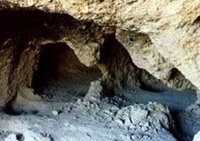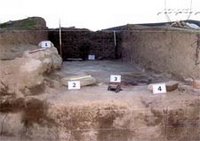Sivand Dam Waits for Excavations to be Finished

Tehran, 26 February 2006 (CHN) -- Continuation of archeological excavations in Bolaghi Gorge and postponement of the inundation of Sivand Dam until finishing the excavations were the main accomplishments of Archeology Seminar for Bolaghi Gorge Salvation Project and the main agreement between Iran’s Cultural Heritage and Tourism Organization (ICHTO) and Iran’s Ministry of Power.
The Archaeology Seminar for Bolaghi Gorge Salvation Project was held 23-24 of February in the city of Shiraz in Fars province with the attendance of head of the Research Center of ICHTO, Cultural Heritage representative in Iran’s parliament, some authorities of ICHTO and a large number of Iranian and foreign archeologists in order to study the archeological achievements which have been carried out so far in Bolaghi Gorge historical site and to determine the appropriate time for flooding of the Sivand Dam with causing the least harm to the historical sites of Bolaghi Gorge.
In this 2-day seminar, archeologists presented their reports and their future programs for Bolaghi Gorge Salvation Project.
“I am so glad to witness such an interactive cooperation between different organizations to save the archeological site of Bolaghi Gorge. Today the high cooperation among different domestic and foreign archeologists indicates the positive increase in cultural cooperation among different countries which is not comparable to the time when the first foreign archeological teams came to Iran about one hundred years ago. Such a comprehensive cooperation led to saving some important historical sites in Bolaghi Gorge which could have been lost due to the inundation of Sivand Dam,” said Taha Hashemi, head of Research Center of the Cultural Heritage and Tourism Organization of Iran at the end of the seminar.
Taha Hashemi also explained that the research center of ICHTO welcomes any kind of cooperation in this respect.
“Based on the agreements made, the inundation of Sivand Dam will be postponed until the end of archeological and scientific research in Bolaghi Gorge historical site,” added Taha Hashemi. Restarting construction of Sivand Dam, located in Bolaghi Gorge, and the possibility of the destruction of historical sites behind the dam, made the authorities of the Cultural Heritage and Tourism Organization of Iran, and Parse-Pasargadae organization to start some comprehensive planning to carry out archeological studies in this site. Research programs for Bolaghi Gorge Salvation Project started with the attendance of different research groups, each have carried out different excavations in different fields. The two day seminar from 23-24 of February was held under the title of “Archeological Seminar for Bolaghi Gorge Salvation Project”, in order to announce the results of the excavations and researches in this historical site. Major conclusions achieved in this seminar are as follows:
1) The participants of this seminar, Archeological Research Center, and Parse Pasargadae Organization appreciated those researchers who took part in this project.





























